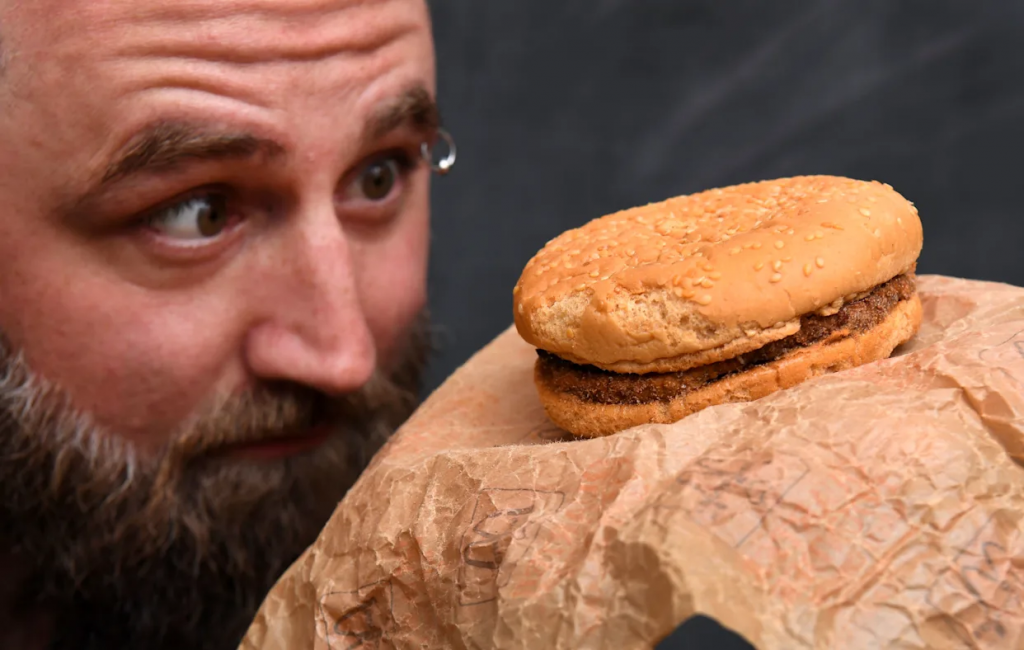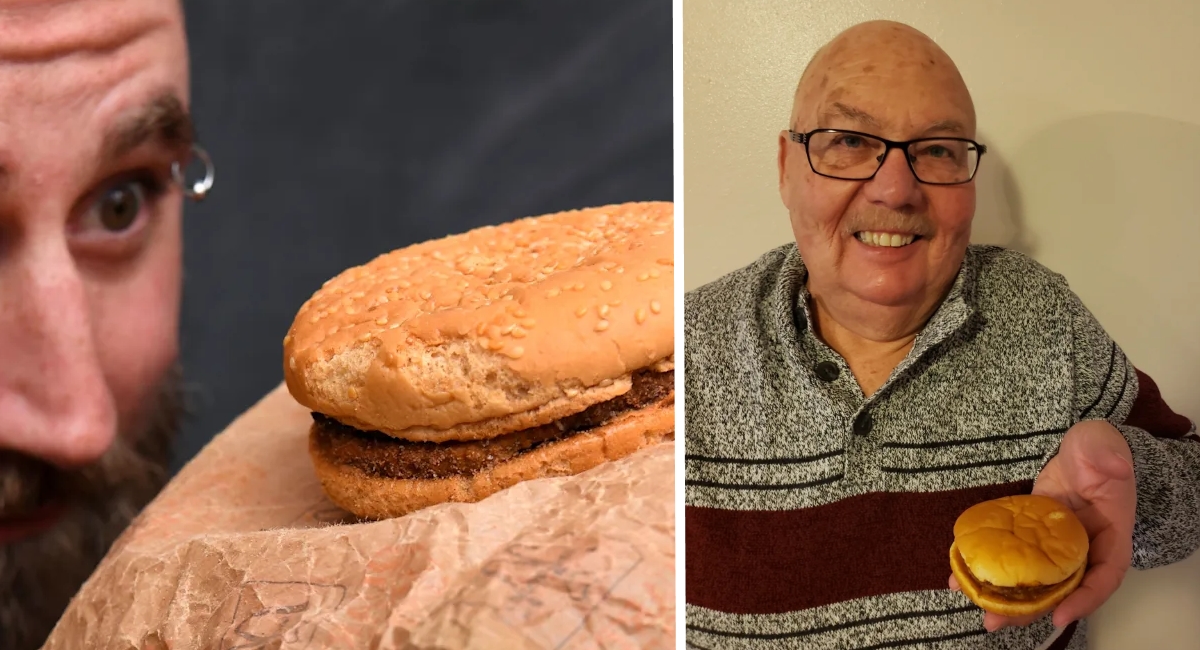In a tale stranger than fiction, two Australian friends—**Eduard Nitz** and **Casey Dean**—still possess a **Quarter Pounder** they purchased back in **1995** in Adelaide. Almost three decades later, the burger remains remarkably intact: **rock hard**, mold-free, and preserved in its original wrapping—earning it the nickname “Senior Burger” as featured by the New York Post and further chronicled globally.
The duo originally bought the burger for a friend who never showed up. According to **Casey**, they agreed to hold it indefinitely—never expecting it would outlast memory. Over the years, the burger lived in a cardboard-and-timber box, including a stint in a hot shed in Adelaide’s summer heat—yet it never decayed as AFP and Dean told reporters.

“It’s still unchanged… too old for mold, even rats won’t touch it.”
They’ve never interfered with it. No preservatives, no refrigeration—just passive storage. Casey described bouncing the burger off its display box to demonstrate its density. Despite shrinkage, the bun and patty remain distinct; the waxed paper still legible, confirming its authenticity as shared in their recent AMA.
Dean and Nitz have embraced the absurd fame: they launched a Facebook page jokingly challenging a 20‑year‑old burger to get more likes than Kanye West. Their project eventually spawned fan art, a Spotify track, and even plans for an AI chatbot to talk to “Senior Burger” like a culinary therapist as they revealed online; they’ve declined offers to sell it, viewing its cultural value as priceless.
Nutrition experts say the secret may lie in dehydration. McDonald’s burgers have high salt content and low moisture—conditions unfavorable for mold or bacteria growth. Similar burgers kept indoors often just dry out rather than spoil. McDonald’s themselves stated that under dry conditions, many burgers could behave similarly—but few owners have held onto one for this long as part of their public statement.
This isn’t the only record—Utah-based **David Whipple** reportedly kept a McDonald’s burger from **1999** and found it nearly unchanged after over 14 years in his coat pocket. His burger lives in a jar, intended originally as a science demo—today it’s a slower version of the same phenomenon per Global News coverage.
Online, reaction has ranged from astonishment to dark humor. One Redditor quipped: “Can’t imagine what it’d do inside your body,” while others speculated about archiving fast food artifacts. The spectacle has challenged ideas about perishability, preservatives, and our understanding of food decay as seen in r/AMA comments.
So what does the Senior Burger look like? Density over digest—dry, firm, and virtually unchanged aside from slight shrinkage. Still wrapped in the original wax paper and cardboard ring, it stands as a cultural oddity, memory capsule, and conversation starter.

As Senior Burger turns 30 in 2025, its creators are rolling out an AI chatbot, commemorative songs, and keeping it firmly in the family. Most agree: whether you call it bizarre or brilliant, it’s real proof that McDonald’s patties can outlive memory—if given enough time and a dry cupboard.





